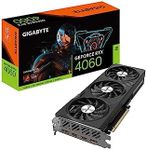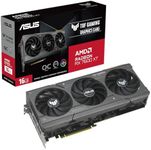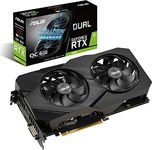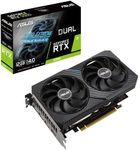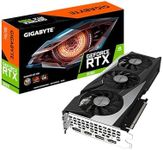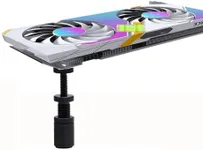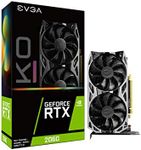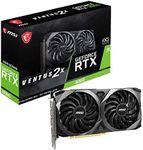Buying Guide for the Best Graphics Cards For Vr
Choosing the right graphics card for virtual reality (VR) is crucial for an immersive and smooth experience. VR demands high performance from your graphics card to render detailed environments and maintain a high frame rate, which is essential to avoid motion sickness and ensure a seamless experience. Here are the key specifications you should consider when selecting a graphics card for VR, along with explanations to help you make an informed decision.GPU (Graphics Processing Unit)The GPU is the heart of the graphics card and is responsible for rendering images, animations, and video for your computer's screen. For VR, a powerful GPU is essential to handle the high-resolution and complex graphics. GPUs are typically divided into entry-level, mid-range, and high-end categories. Entry-level GPUs may struggle with VR, while mid-range GPUs can handle most VR applications with decent performance. High-end GPUs provide the best experience with the highest frame rates and graphical fidelity. Choose a GPU based on the VR applications you plan to use; for demanding games and applications, a high-end GPU is recommended.
VRAM (Video RAM)VRAM is the memory used by the GPU to store image data and textures. It plays a significant role in determining how well your graphics card can handle high-resolution textures and complex scenes. For VR, having sufficient VRAM is important to ensure smooth performance. Graphics cards typically come with VRAM ranging from 4GB to 24GB or more. For basic VR experiences, 4GB to 6GB may suffice, but for more demanding applications and future-proofing, 8GB or more is recommended. Consider the VR applications you intend to use and opt for a card with enough VRAM to handle them efficiently.
Clock SpeedClock speed, measured in MHz or GHz, indicates how fast the GPU can process data. Higher clock speeds generally translate to better performance, as the GPU can handle more operations per second. For VR, a higher clock speed can help maintain smooth frame rates and reduce latency. Graphics cards with higher clock speeds are typically more expensive, but they offer better performance for demanding VR applications. If you plan to use VR for gaming or other intensive tasks, look for a graphics card with a higher clock speed to ensure a smooth experience.
CUDA Cores / Stream ProcessorsCUDA cores (for NVIDIA GPUs) or stream processors (for AMD GPUs) are the parallel processors within the GPU that handle the rendering tasks. More cores generally mean better performance, as the GPU can process more data simultaneously. For VR, having a higher number of CUDA cores or stream processors can improve the rendering of complex scenes and maintain high frame rates. Entry-level GPUs may have fewer cores, while high-end GPUs boast thousands of cores. Choose a graphics card with a higher number of cores if you plan to use VR for graphically intensive applications.
Ports and ConnectivityThe ports on a graphics card determine how you can connect your VR headset and other displays. Common ports include HDMI, DisplayPort, and USB-C. For VR, it's important to ensure that your graphics card has the necessary ports to connect your VR headset. Some VR headsets require specific ports, so check the requirements of your headset before purchasing a graphics card. Additionally, having multiple ports can be beneficial if you plan to use multiple monitors alongside your VR setup. Ensure your graphics card has the right combination of ports to meet your connectivity needs.
Power ConsumptionGraphics cards require power to operate, and more powerful cards typically consume more electricity. Power consumption is measured in watts (W). For VR, a high-performance graphics card is often necessary, which means higher power consumption. Ensure that your power supply unit (PSU) can handle the power requirements of the graphics card you choose. Graphics cards usually list their recommended PSU wattage, so check this specification to avoid any power issues. If you have a lower wattage PSU, you may need to upgrade it to support a high-end graphics card for VR.
Cooling SystemThe cooling system of a graphics card helps manage the heat generated during operation. Effective cooling is crucial for maintaining performance and preventing overheating, especially during intensive VR sessions. Graphics cards come with different cooling solutions, such as single-fan, dual-fan, or even liquid cooling. For VR, a card with a robust cooling system is recommended to ensure stable performance. If you plan to use VR for extended periods or in a warm environment, consider a graphics card with a more advanced cooling solution to keep temperatures in check.
